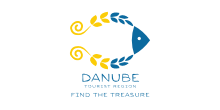Ruse is the largest Bulgarian city on the Danube and is also called the "Danube Pear!" The most significant economic, transport, and cultural centre in Northern Bulgaria is a city that preserves 23 centuries of history. At the end of the 1st century, the Roman fortress of Sexaginta Prista, or "Port of the 60 Ships", became part of the Danube Limes. In the first half of the 19th century, the then-called Ruschuk became the capital of the Danube Wilayah in the Ottoman Empire, which lead to rapid modernisation and was the basis for the popular definition of Ruse as the city of the firsts – the first railroad, the first printing and insurance company, the first naming of streets, the first telegraph line, and so on. This spiritedness continued after the Liberation as well when the city was the first in terms of population. At the beginning of the 20th century, Elias Canetti, the writer and humanist who received a Nobel Prize in Literature, was born and spent the first years of his childhood in Ruse. In his biographical book The Saved Language, Canetti draws attention to the cosmopolitan spirit of his birthplace, saying that "everything I experienced later in life had already happened in Ruschuk once."
Ruse's appearance today is strongly related to its unique architectural identity, which is heavily influenced by the best examples in the Danube region. Two of Ruse's symbols stand in the city centre — the Monument of Liberty, designed by eminent Italian sculptor Arnoldo Zokki, and the impressive neoclassical building of the Dohodno Zdanie, designed by the Viennese architect Peter Paul Brang with seven figures, representing art, science, agriculture, crafts, trade, defence, and the soaring spirit.
The Regional History Museum in Ruse holds nine expositions, including three outdoor ones: the Roman fortress Sexaginta Prista, the Rock-Hewn Churches of Ivanovo (a UNESCO World Heritage Site) and the Medieval town of Cherven. Among the city's other landmarks are the Pantheon of the National Revival Heroes (a monument and ossuary to national heroes and revolutionaries), the Museum of Urban Life (also known as the Kaliopa House), the Museum of Baba Tonka and the Museum of Zahari Stoyanov, as well as the only one of its kind in Bulgaria ecomuseum with an aquarium with Danube fish.
For nature lovers, Lipnik Forest Park is located near Ruse, while the vast Rusenski Lom Nature Park is only a few kilometres away.
